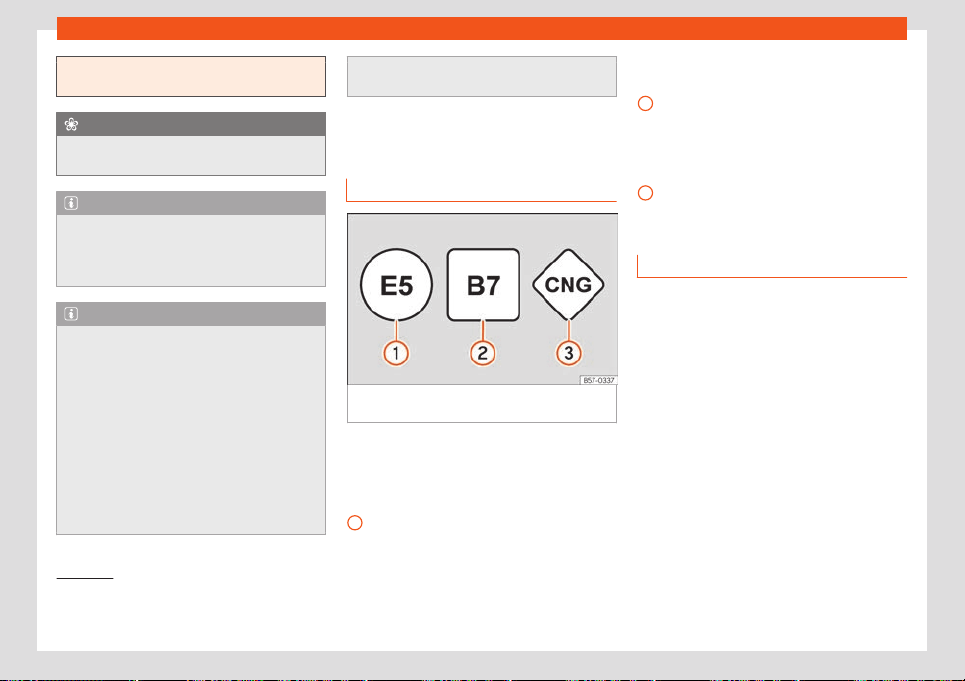Loading ...
Loading ...
Loading ...

Practical tips
take longer than normal (up to one minute)
to start firing.
For the sake of the environment
Do not overfill the fuel tank, it may cause
the fuel t
o overflo
w if it becomes warm.
Note
There is no emergency mechanism for the
manual release of the fuel tank flap
. If nec-
essary, request assistance from special-
ised personnel.
Note
Diesel vehicles are fitted with a protective
device that prevents the inser
tion of the
wrong fuel hose
1)
. It is only possible to re-
fuel with Diesel nozzles.
●
If the pump nozzle is worn, damaged, or if
it is very small, it is possible that it will not
be able to open the protective device. Be-
fore trying to insert the pump nozzle by
turning it, try a different pump or request
specialist help.
●
If you fill the tank from a reserve fuel can-
ister, the protective device will not open.
One way to resolve this is to pour the fuel in
very slowly.
Fuel types
Identification of fuels
1)
Fig. 304
Identification of fuels according to
Eur
opean Union (EU) Dir
ectiv
e 2014/94/
Fuels are identified by different symbols on
the pump and on your v
ehicl
e's t
ank fl
ap
. The
identification serves to prevent confusion
when choosing the fuel.
Petrol with ethanol (“E” stands for Etha-
nol). The number indicates the percent-
1
age of ethanol in the petrol. “E5” means,
f
or e
x
ampl
e
, an ethanol ratio of 5% max.
Diesel with biodiesel (“B” stands for Bio-
diesel). The number indicates the per-
centage of biodiesel in the diesel. “B7”
means, for example, a proportion of bio-
diesel of max. 7%.
Natural gas: “CNG” means Compressed
Natural Gas.
Type of petrol
3 Valid for: vehicles with petrol engines
The correct grade of petr
ol is listed inside the
fuel tank flap.
The vehicle is equipped with a catalytic con-
verter and must only be run on unleaded
petrol. The petrol must comply with the
standard EN 228 and be sulphur-free. Fuels
with a 10% ethanol ratio can be refuelled
(E10)
2)
. The types of petrol are differentiated
by using the octane numbers (RON) or via
the anti-knock index (AKI).
2
3
1)
Depending on country
2)
Follow the regulations of the country you are
driving in.
336
Loading ...
Loading ...
Loading ...